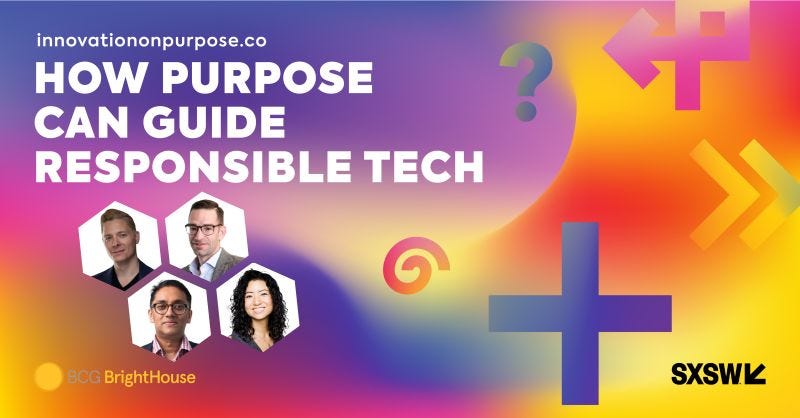Image created by DALL-E, OpenAI's image generation model.
Introduction:
In an era where technology is rapidly evolving, the notion of human-machine symbiosis can seem overwhelming. However, I envision fostering a world where technology enhances human capabilities. This journey in artificial intelligence started three decades ago, amidst the second AI winter. It was a period marked by technological advancements and a deeper understanding of the relationship between humans and machines.
My Career Path and Humane Technology:
My career began with a fascination for neural networks and parallel computation and evolved through various roles from data scientist to enterprise architect. This journey was not just professional; it explored how technology and humanity intertwine. My epiphany during the 'decade of the brain' was pivotal: technology, at its core, is about enhancing the human experience. This revelation steered me towards human-centered design and led to the creation of motivational design. Collaborating with innovative startups and leading agencies, I pioneered new approaches in the field of behavioral design.
Having observed the consequences of innovation without foresight, I have dedicated my recent efforts to fostering 'innovation with purpose' – a deep commitment to design that is both humane and thoughtful. This approach not only advocates for technological progress but also emphasizes a conscientious strategy that prioritizes the well-being of humanity and our planet. It's about creating a legacy that benefits future generations. As I contemplate the future of human-machine symbiosis, I do so with a steadfast dedication to these principles of humane design — How Purpose Can Guide Responsible Tech.
JARVIS: Just A Rather Very Intelligent System
Source: https://www.youtube.com/@bestmovieclips7050
The character of JARVIS in the MCU, a seemingly omnipotent AI, is a popular reference for human-machine collaboration. My experiences with advanced AI tools like ChatGPT have pushed me to think beyond this cinematic portrayal. There are many scenes where Stark interacts with machines, but many are extensions of what we have experienced over the last decade. The future of AI is about understanding the unique roles both humans and machines play in the thinking process. It's about discerning the thinking JARVIS represents and how it complements Tony Stark's human intellect.
A New Framework for Thinking: Inspired by Kahneman's 'Thinking Fast and Slow,' I propose an extended framework for cognition:
System Zero - Extended Minds: Our ability to think beyond our brains, using tools like paper and pencil.
System One - Unconscious Minds: The automatic processes driving fast thinking.
System Two - Conscious Minds: Our slower, more deliberate thought processes.
System Three - Artificial Minds: The evolving capabilities of AI.
System X - Collective Minds: Our collaboration with each other and AI agents.
In this article we will explore System Zero: exemplified by Andy Clarke's 'Extended Mind' theory, using the Tetris game as an example of varying levels of external cognition, from mental rotation to neural interfaces.
Andy Clark's 'Extended Mind' Theory:
Image created by DALL-E, OpenAI's image generation model.
One of the theorists I draw inspiration from is Andy Clark and his 'Extended Mind' theory. Clark posits that our mind extends beyond our physical brains, incorporating tools and devices into our cognitive processes. He uses the example of Tetris to illustrate this: we can rotate the blocks mentally, use a game controller, or through a neural interface. These examples illustrate the intertwined nature of thinking inside our heads to interact with the external world. Let's take a more basic example to demonstrate the power of thinking outside of our heads.
The Art of 'Thinking with a Pencil':
My exploration of external cognition started with a simple yet effective technique: "Thinking with a Pencil." This practice began under the mentorship of a brilliant architect, Roger. He had a unique way of guiding us through complex problems with probing questions. I realized that often, I would find the solution even before Roger articulated it. This led to a practice among my team where we would emulate Roger's approach, complete with his eccentric mannerisms for pure comedy, to help us solve problems. This technique evolved into what I later termed 'Question Storming,' similar to Hal Gregerson’s ‘Question Bursts.’ It exemplifies System Zero thinking, where we use a passive external medium to facilitate internal cognitive processes. No fancy AI, just interacting with an inert piece of paper. What this technique enables is a dialog between our conscious minds (System Two) and our more powerful pattern-matching unconscious (System One) via an external medium (System Three.)
Conclusion:
In the coming weeks, we'll explore the interactions with these unique cognitive systems (System One, Two, Three, and X) in depth, aiming to develop a framework for future AI systems and teach us how to best leverage the current GenAI batch. This journey isn't just about understanding AI; it's about reshaping the future of human-machine collaboration. As Alan Kay famously said,
"The best way to predict the future is to invent it."







I really appreciate the 'framework of thinking'. This is fascinating. Good work Kes. Thanks for posting.